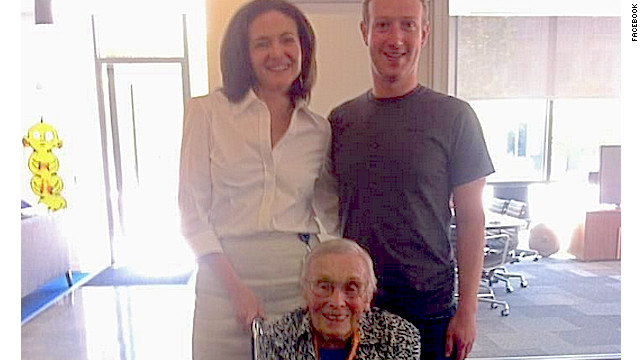KENNEDY SPACE CENTER, Fla. -- An Atlas 5 rocket boosted a pair of satellites into the maelstrom of the
Van Allen radiation belts
early today, kicking off a $686 million mission to probe the structure
of the belts and how they're buffeted by the sun and to improve
forecasting to reduce the threat they pose to astronauts, power grids
and increasingly critical satellite systems.
"Today, 11 years hard work was realized by the science team," said
Nicola Fox, the deputy project scientist at Johns Hopkins University's
Applied Physics Laboratory. "They're now at home in the Van Allen belts
where they belong. ... For the science team, the real work now begins.
One big milestone was getting up there. The next big milestones are all
of our scientific discoveries."
Running six days late because of bad weather and trouble with a
tracking system transponder, the 189-foot-tall United Launch Alliance
Atlas 5 thundered to life at 4:05 a.m. EDT (GMT-4), lighting up the
pre-dawn sky as it majestically climbed away from launch complex 41 at
the Cape Canaveral Air Force Station.

A United Launch Alliance Atlas 5 rocket climbs
away from complex 41 at the Cape Canaveral Air Force Station early
Thursday, boosting twin NASA satellites into space for a mission to
study the Van Allen radiation belts.
(Credit:
Pat Corkery/United Launch Alliance)
Quickly accelerating through decks of low clouds as it consumed its
load of liquid oxygen and kerosene rocket fuel, the Russian-designed
RD-180 first-stage engine boosted the rocket out of the dense lower
atmosphere and fell away about four minutes after liftoff. A few seconds
later, the rocket's hydrogen-fueled Centaur second-stage engine
ignited, continuing the climb to space.
The Pratt & Whitney RL10A engine burned for nine minutes and 15
seconds to propel the launcher and its dual-satellite payload into a
preliminary parking orbit. Fifty-six minutes later, a second four-minute
39-second burn completed the launch phase of the mission.
Mounted atop the Centaur were identical 1,400-pound solar-powered
satellites built by JHU's Applied Physics Laboratory. With the Centaur
spinning at 5 rpm for stability, the first Radiation Belt Storm Probes
-- RBSP -- satellite was released one hour and 18 minutes after launch,
followed 13 minutes later by the second.
Four solar panels on each satellite then unfolded as planned and engineers reported both appeared to be in good shape.
"I'm very happy to report we have two healthy spacecraft on orbit,"
said project scientist Rick Fitzgerald, wearing his "lucky tuxedo."
"Many thanks to ULA and the launch services program for giving us a
great ride and injecting us in exactly the orbit we wanted to be in.
Congratulations to the whole RBSP team for a job well done."
He joked that NASA's Jet Propulsion Laboratory "had their seven
minutes of terror" with the recent landing of the Mars Science
Laboratory Curiosity rover.
"I had my hour and 55 minutes of terror tonight," Fitzgerald said. "I
had dark hair when we launched. Glad to say we're on orbit now and
everybody's happy."
Into the hellish space of the Van Allen belts The RBSP
satellites were designed to fly in slightly different orbits tilted 10
degrees to the equator with high points, or apogees, around 19,000 miles
and low points, or perigees, between 310 and 420 miles. The spacecraft
will periodically lap each other, passing as close as 100 miles from
each other and as far apart as 24,000 miles or so.
The spacecraft will fly through both main radiation belts, enduring
hellish conditions to precisely measure the fields and particles
defining the doughnut-shaped structures, how they expand and contract as
they are buffeted by solar storms and how they change over time.
"Sometimes we see (an event) coming from the sun and the radiation
belts pump up, they get much larger in size and much larger in energy,"
Fox said before launch. "Other times, they actually shrink and almost go
away. And then there are times the radiation belts seem to not know
that anything has happened.
"We know what processes are going on in the radiation belts. It's
almost like making a cake. You know all the ingrediants, but you're not
quite sure of the proportions of each piece in each given storm.
Sometimes, one process is far more dominant than another and that is
obviously causing the radiation belts to respond differently to
seemingly similar things coming from the sun."

The RBSP satellites, built by Johns Hopkins
University's Advanced Physics Laboratory, each feature a suite of
instruments to measure particles and fields shaping the Van Allen
radiation belts.
(Credit:
NASA)
An initial launch attempt last Friday was scrubbed because of
questions about a C-band transponder on the rocket that is used for
tracking during the climb to space. After reviewing telemetry, mission
managers decided the transponder could be launched as is and no repairs
were necessary.
But a second launch try Saturday was called off because of nearby
thunderstorms and cloud cover associated with then-Tropical Storm Isaac.
NASA managers initially discussed making a third try the next day
before deciding to wave off until Thursday to give the weather a chance
to improve.
The Atlas then was rolled back to the protection of its processing
building and, taking advantage of the opportunity, engineers replaced
the C-band transponder. The rocket was rolled back out to the pad on
Tuesday.
Discovered in 1958 by the first U.S. science satellite, Explorer 1,
the Van Allen radiation belts are defined by Earth's magnetic field,
which traps electrically charged particles from deep space and the sun
and shields the planet's biosphere from their harmful effects.
But the belts pose a threat to astronauts and they can affect
sensitive satellite systems and even power grids on Earth when buffeted
by powerful solar storms.
Charged particles in motion Positively charged protons tend
to get trapped in an inner belt that begins at the top of the atmosphere
and extends out to about 4,000 miles. Negatively charged electrons
populate a thicker outer belt that begins at an altitude of about 8,000
miles and extends through 26,000 miles. Powerful electric currents flow
as the particles interact with the magnetic field, which can accelerate
them to nearly the speed of light.
Where magnetic field lines plunge into the atmosphere near the north
and south poles, particles spiraling inward can bounce back out or crash
into the upper atmosphere producing spectacular auroral displays. The
RBSP satellites are equipped with eight shielded, state-of-the-art
instruments designed to precisely measure field strength and particle
energies.
"We need eight [instruments] because we're measuring across this huge
energy range," said Harlan Spence, a principal investigator from the
University of New Hampshire. "From particles that are very, very low
energy -- in our units we talk about going down to one electron volt,
very low energy -- to particles that are moving near the speed of light
at billions of electron volts. A huge energy range we have to cover.
We're looking at protons, electrons, helium and oxygen ions."
The picture is especially
complex, he said, because "charged particles in the presence of a
magnetic field have different motions. There's a gyro motion, the
particle will spiral around, gyrate around a magnetic field (line). In a
magnetic field geometry that's narrowing at different locations, they
can bounce between these reflection points and lastly, they can drift
across the field lines."
Particles trapped in the radiation belts move in "complicated
directions," Spence said. "Part of our job is to [measure] the
directionality. Why do we measure them? Killer electrons are space
weather's villains. They are fantastic things to observe from the point
of view of the physics, there's this cosmic accelerator literally above
our heads that's taking these particles and bringing them near to the
speed of light. But they also can inflict damage."
RBSP, Spence said, "will go right to the scene of the crime to watch
the radiation belt particles in action, along with their accomplices.
What is it that accelerates these particles? It's the electric and
magnetic fields that determine their quote-unquote bad behavior."
Along with accelerating charged particles and causing the Van Allen
belts to expand, the electric and magnetic fields that define the region
can also cause "the radiation belts to decrease, they can cause
particles to hit the atmosphere so they're lost and never come back,"
said Craig Kletzing, a principal investigator at the University of Iowa.
"So by measuring these fields, we have the other half of the puzzle,
we have the particles and then we have the fields that cause them to
change their behavior."
A better knowledge of the physics driving the radiation belts will
improve scientists' ability to forecast Earth's space weather and its
effects on sensitive electrical systems.
"The outer radiation belts are where all our communication satellites
exist, the various things that make sure that GPS works, as well as
telephone communications," Kletzing said in a release. "They can be
affected by these particles, and, in fact, it has happened that those
satellites have actually been knocked out by radiation."
As for astronauts, he said, "the various manned missions that NASA
has planned to go beyond the space station to places like the moon or
Mars also require transiting through this region. Understanding the
right time to go, when the particles are fewest so that you don't impact
human health, is a very important thing to understand."














